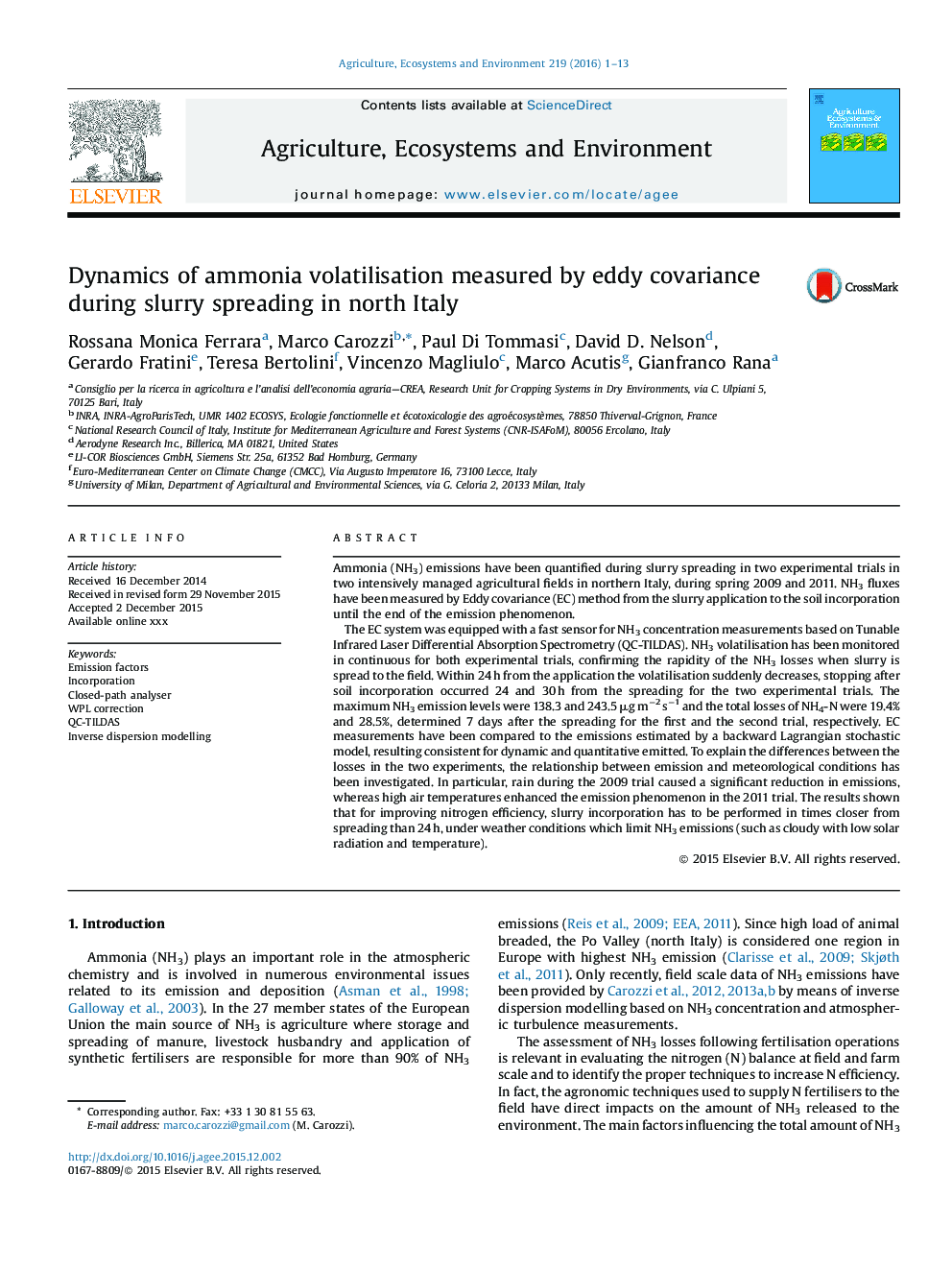| Article ID | Journal | Published Year | Pages | File Type |
|---|---|---|---|---|
| 8487508 | Agriculture, Ecosystems & Environment | 2016 | 13 Pages |
Abstract
The EC system was equipped with a fast sensor for NH3 concentration measurements based on Tunable Infrared Laser Differential Absorption Spectrometry (QC-TILDAS). NH3 volatilisation has been monitored in continuous for both experimental trials, confirming the rapidity of the NH3 losses when slurry is spread to the field. Within 24 h from the application the volatilisation suddenly decreases, stopping after soil incorporation occurred 24 and 30 h from the spreading for the two experimental trials. The maximum NH3 emission levels were 138.3 and 243.5 μg mâ2 sâ1 and the total losses of NH4-N were 19.4% and 28.5%, determined 7 days after the spreading for the first and the second trial, respectively. EC measurements have been compared to the emissions estimated by a backward Lagrangian stochastic model, resulting consistent for dynamic and quantitative emitted. To explain the differences between the losses in the two experiments, the relationship between emission and meteorological conditions has been investigated. In particular, rain during the 2009 trial caused a significant reduction in emissions, whereas high air temperatures enhanced the emission phenomenon in the 2011 trial. The results shown that for improving nitrogen efficiency, slurry incorporation has to be performed in times closer from spreading than 24 h, under weather conditions which limit NH3 emissions (such as cloudy with low solar radiation and temperature).
Keywords
Related Topics
Life Sciences
Agricultural and Biological Sciences
Agronomy and Crop Science
Authors
Rossana Monica Ferrara, Marco Carozzi, Paul Di Tommasi, David D. Nelson, Gerardo Fratini, Teresa Bertolini, Vincenzo Magliulo, Marco Acutis, Gianfranco Rana,
